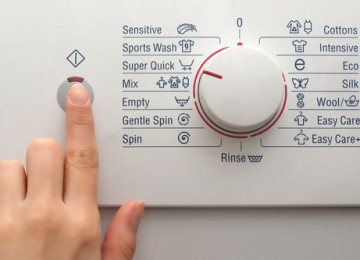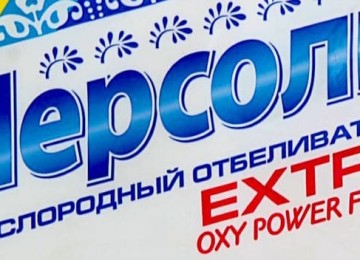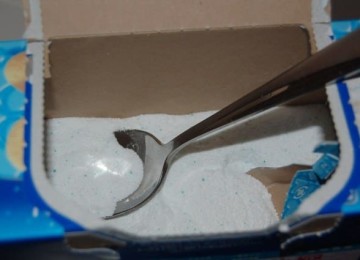 Every person has white things. If, during washing with colored fabrics, they received stains or a different shade, then it is best to seek help from dry cleaning specialists to save them. But at the same time, be prepared to pay a decent amount of money for the services provided. This becomes a reason to look for independent solutions to help bleach things that have been dyed during washing. So, how do you solve such unpleasant problems with clothing on your own?
Every person has white things. If, during washing with colored fabrics, they received stains or a different shade, then it is best to seek help from dry cleaning specialists to save them. But at the same time, be prepared to pay a decent amount of money for the services provided. This becomes a reason to look for independent solutions to help bleach things that have been dyed during washing. So, how do you solve such unpleasant problems with clothing on your own?
What products can dye white things?
Before fixing the problem with light-colored items, it is recommended to study the information, which will subsequently help you avoid making mistakes.
Clothes of any color can fade, staining not only linens, but also other things. For example, a light blue T-shirt that is washed together with red clothes will, in most cases, change its color. Hence the conclusion - clothes must be washed by color, but if there are few clothes, we recommend paying attention to a number of features in order to exclude the possibility of staining:
- newly purchased clothes are more likely to shed, and they should be washed, especially the brightest ones, separately from other things;
- white and colored items are washed separately; experiments should not be carried out in order to avoid bleaching. This rule especially applies to clothes made of cotton material;
- Even a small insert on clothing can leave traces of paint;
- We pay special attention to clothes that will be washed in hot water. In this case, white items must be separated from colored items to prevent staining.
By complying with the above requirements, you can avoid a situation where your clothes become dyed during washing, and you will have to take emergency measures to restore their shade using bleaching methods.
Preparatory activities before washing

Many fabrics fade during the washing process, so the clothes have to be sorted first. Particular attention is paid to bright things, which can be damaged by dyeing white and colored things.
It is best to soak a new product in a highly concentrated water-salt solution for about thirty minutes, and then wash it by hand. Such actions will prevent the paint from washing out from the material during subsequent treatments.
In any case, the information about the fabric provided by the manufacturer is taken as a basis. The label may indicate the permitted water temperature and the possibility of using a washing machine. There are known cases when white clothes changed color due to the fact that the water temperature was set in violation of the recommendations, and after washing it was necessary to bleach.
Another reason for dyeing is the simultaneous washing of natural and synthetic fabrics. If you suspect that the item may fade, wet a corner of the fabric, rub gently, rinse and check the shade of the treated area.
But if you make a mistake and your light-colored clothes become dyed during the washing process, you can restore their original shade by using bleaching.
Popular options for whitening things
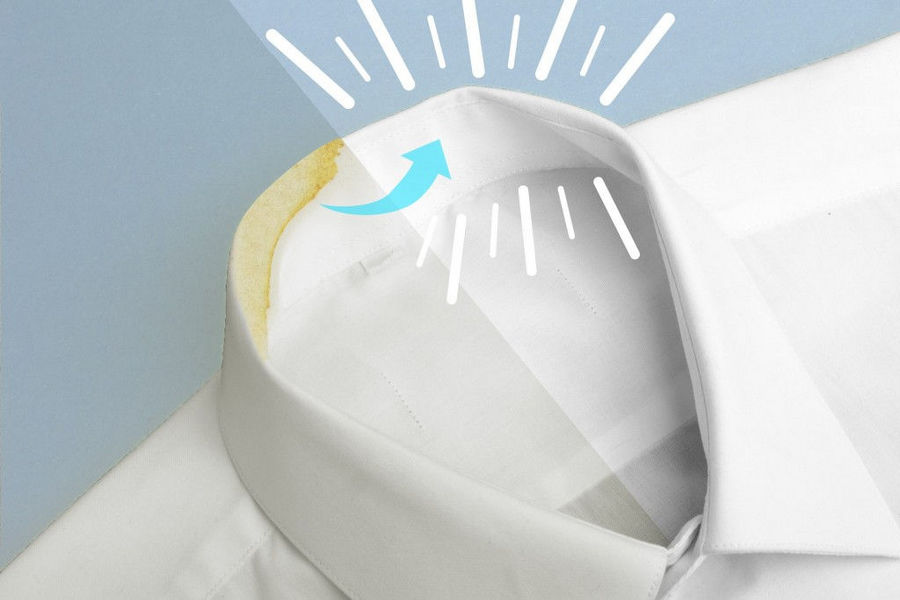
Small local spots can be removed with lemon juice. The fruit is cut, applied to the problem area, kept in this position for at least two hours, then the item is sent for washing. The effect is given by citric acid, half a packet of which is diluted in a glass of water.
Dyed clothes are saved with a specially prepared paste. To do this, take water, coarse salt, and shaved light soap in equal proportions and mix. This bleaching mixture is applied from the reverse side to the contaminated area, and after four hours the washing is performed using a suitable method.
Table vinegar helps in removing unwanted stains from white clothes. Take a container, fill it with water with soap dissolved in it, add five tablespoons of vinegar. Faded clothes are soaked overnight, washed and rinsed. You can add five tablespoons of vinegar to a bucket of water and boil clothes in this solution for thirty minutes. Traces of staining will disappear.
You can save white things with a saturated soda solution consisting of three liters of water and six tablespoons of soda. This bleaching solution is poured onto white clothes and left for four hours.
Another effective option is ammonia. Two spoons of it are added to three liters of water, and with this solution you can bleach any item. And if you add twenty grams of ammonia to five liters of water and boil the spoiled item in this solution, the bleaching effect will be amazing.
To bleach clothes, you can use a solution prepared from water, ammonia and hydrogen peroxide, taken in a ratio of 2 to 1 to 1. Items made of linen or cotton materials are boiled in five liters of water with the addition of three spoons of the drug and two of detergent.
A proven option for removing traces of staining is potassium permanganate, several granules of which should be dissolved in heated water. The mixture in which white and light-colored items are to be soaked should be pink.
To bleach wool and silk products, it is recommended to use mustard powder. A couple of spoons of this product are dissolved in two liters of water, allow time for the liquid to settle completely, and carefully pour it into another container. This manipulation is best performed several times. Use the prepared mixture to wash stained items.
If staining occurs with white clothes, you can eliminate the problem with the help of whiteness. Remember that this bleach is considered aggressive and is used exclusively for clothes made of dense natural material. You must act carefully, because exposure to chlorine may cause synthetic fibers to turn yellow after dyeing.
Washing compositions containing oxygen, which enjoy deserved popularity today, have a much gentler effect on fabrics. They do not spoil the structural structure of the material and do not cause allergenic consequences. But it is recommended to follow the exact dosage, which is given in the instructions from the manufacturer.
Optical brightener can lighten any white fabric. It is used for clothes that have received minor traces of dyeing. The processing is done manually; the item is pre-soaked for four hours in a solution of water with the addition of bleach.After this, washing is carried out using any of your preferred methods.
If bleaching dyed clothes is done in a washing machine, then it is best to use gel formulations that do not contain chlorine, diluting them a little with water. The product is poured directly into the drum before storing things or into a special compartment of the tray for detergent compositions. The temperature regime for the water should be minimal, rinsing is performed several times so that traces of the bleach are completely removed.
To remove colored stains from light, dense materials, such as linen, denim or calico, bleach is applied undiluted to the contaminated area and washed off after a minute. After this, the item is soaked in water with the addition of bleach in accordance with the manufacturer's recommendations. After thirty minutes you can do the washing.
What do you do in emergency situations?
If you notice that washed white clothes have changed their original shade, act quickly and decisively, do not delay the bleaching process until later, because the coloring pigments will be firmly embedded in the structure of the fabric and will be quite difficult to remove.
If the coloring is weak, the product is washed in additional water, warmed to room temperature, to which bleach and washing powder are added in small quantities. It is quite possible that this will be enough to return white clothes to their original color. If there is a lot of damage to things, more effective measures will be required.
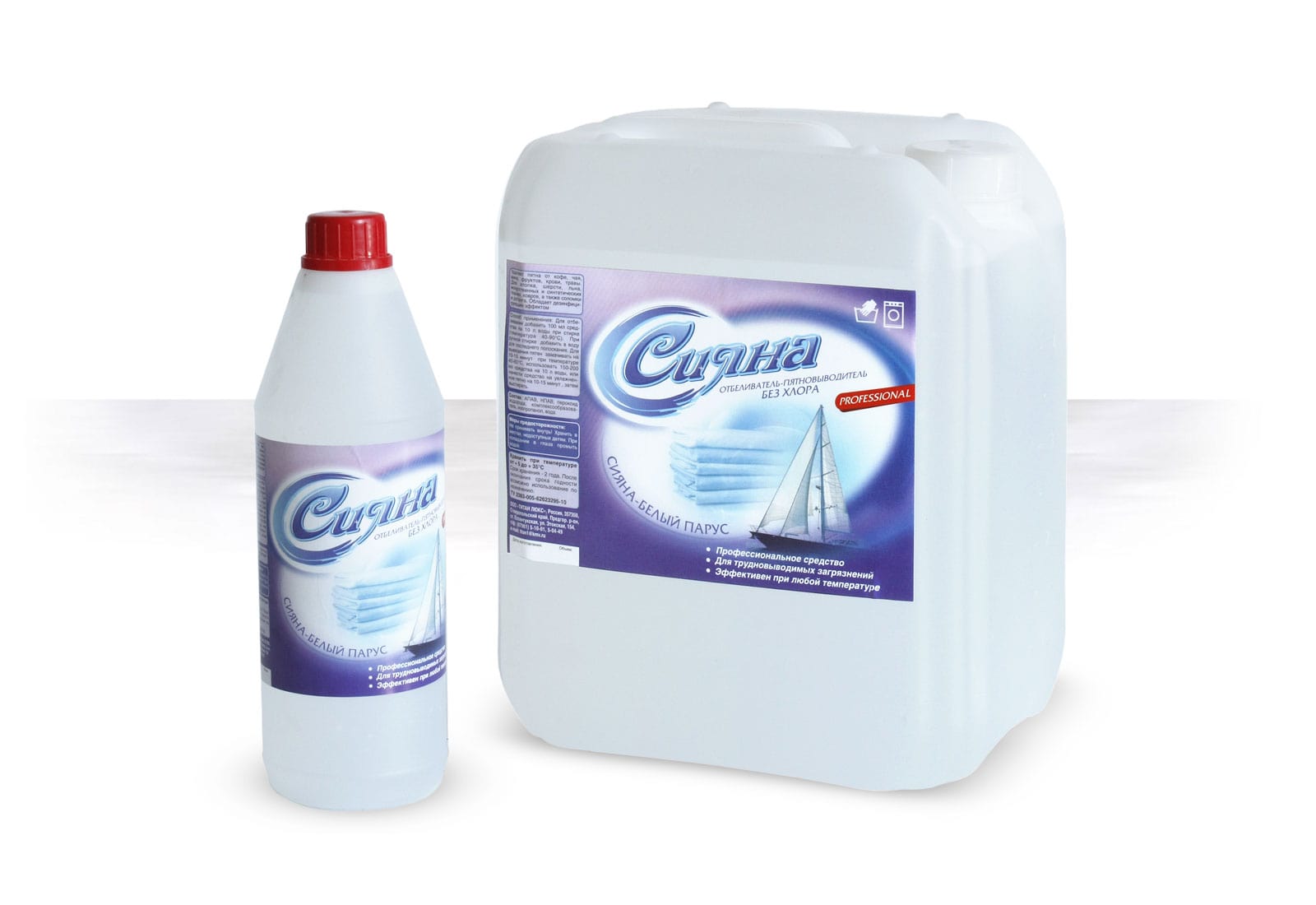
Some useful tips on how to avoid staining
In order not to waste time on additional dry cleaning and minimize the likelihood of clothes staining during washing, we recommend using the recommendations below, which have been repeatedly tested in practice:
- it is necessary to remember that items made of soft and delicate fabrics are subject to significant wear and tear during processing, and they should be bleached once every three washing processes;
- Clothes are washed as they become dirty; they should not be stored in a laundry basket. During long-term storage, dust and dirt eat into the fibrous structure, and bleaching will be much more difficult;
- To prevent woolen and synthetic items from becoming gray, it is necessary to separate them from linen and cotton items before washing;
- If staining does occur, take immediate measures to eliminate it. Faded items should not be dried or ironed, as the coloring pigments will penetrate deeply into the fabric and will be almost impossible to remove;
- The boiling process is used in exceptional cases, since most fabrics that have been dyed, after such a bleaching procedure, lose their respectability and are even irrevocably deformed.
Conclusion
If washing is carried out incorrectly, the fabric is not only stained, but also deformed. To prevent such negative consequences, clothes made from natural and artificial fabrics are washed separately. You should not set the water heating temperature to high; follow all the recommendations given by the manufacturer on the labels. If a painted item cannot be bleached, simply repaint it in a different shade or disguise traces of dyeing with appliqué or embroidery.







